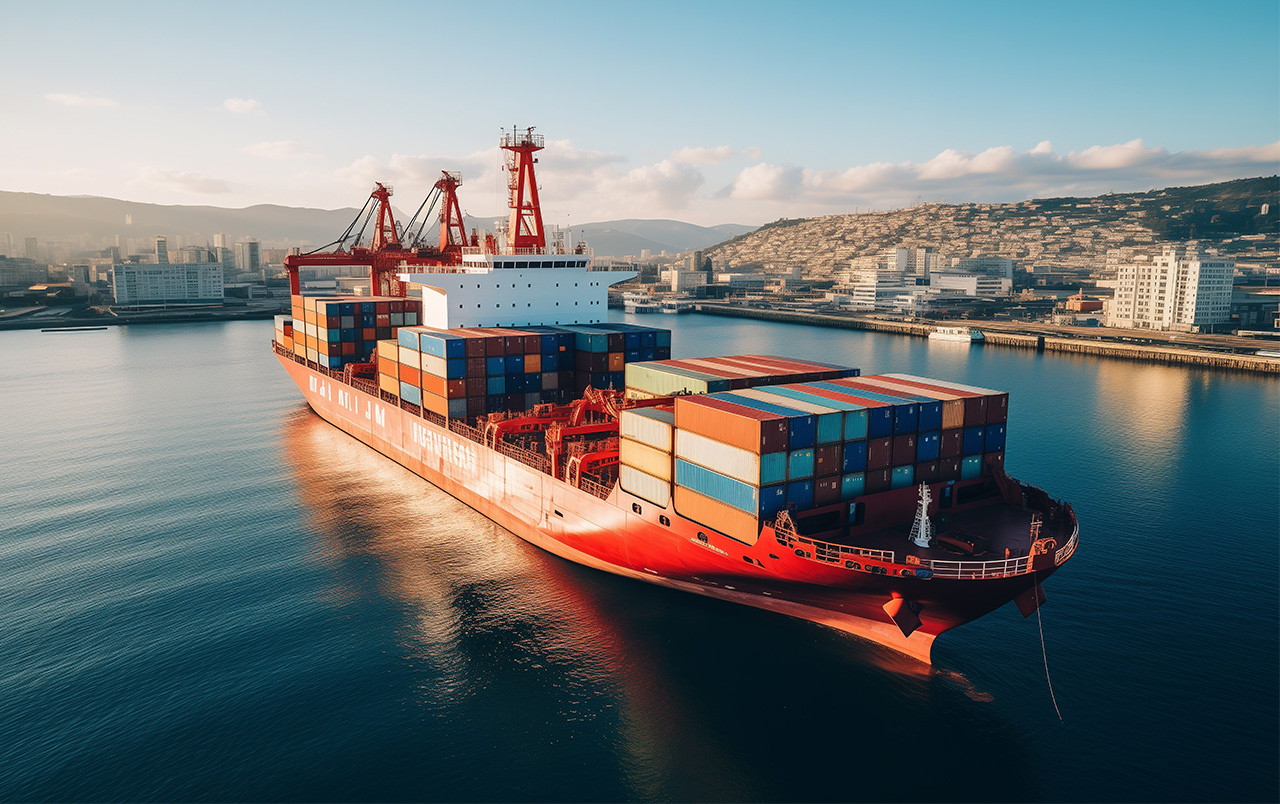
The management of shipping containers is a cornerstone of global trade logistics, facilitating the movement of vast quantities of goods across international waters. With the exponential growth of maritime commerce, efficient container handling has become more critical than ever. Advanced machinery such as the Heavy-Duty Reach Stacker plays a pivotal role in optimizing operations at ports and intermodal terminals. This article delves into the complexities of container management and explores how modern equipment and practices enhance efficiency, safety, and sustainability in the industry.
The Importance of Efficient Container Management
Efficient container management is essential for maintaining the fluidity of the global supply chain. As vessels increase in size, the volume of containers that ports must handle escalates, necessitating more sophisticated strategies and equipment. Inefficient handling can lead to congestion, increased operational costs, and delays that ripple throughout the supply chain, affecting manufacturers, retailers, and consumers alike.
Global Trade and Containerization
Containerization revolutionized trade by standardizing cargo units, allowing for seamless transfer between ships, trucks, and trains. According to the International Chamber of Shipping, over 90% of global trade is carried by sea, with container ships transporting approximately 60% of the value of seaborne trade. This underscores the significance of containers in international commerce and the necessity for proficient management systems.
Challenges in Container Handling
The surge in container traffic presents numerous challenges. Ports must accommodate larger vessels and higher throughput without compromising safety or efficiency. Space constraints, labor shortages, and the need for rapid turnaround times further complicate operations. Additionally, there is increased pressure to adopt environmentally friendly practices, adding another layer of complexity to container management.
Role of Reach Stackers in Container Management
Reach stackers have become indispensable in the realm of container handling due to their versatility and efficiency. A Reach Stacker is a heavy-duty vehicle equipped with a telescopic boom and spreader, enabling it to lift and stack containers quickly and safely. These machines can access containers in the second or third row, enhancing space utilization and operational flexibility.
Advantages Over Traditional Equipment
Compared to traditional forklifts and straddle carriers, reach stackers offer several advantages. They combine mobility with lifting capacity, allowing for the handling of heavy containers in tight spaces. Their ability to stack containers up to five rows high and three rows deep maximizes yard space. Furthermore, their maneuverability reduces the time required to move containers, increasing throughput and reducing vessel idle times.
Enhancing Operational Efficiency
By employing reach stackers, ports can streamline their operations. These machines facilitate faster loading and unloading of containers from ships, railcars, and trucks. This acceleration in handling speeds contributes to shorter ship berthing times and quicker turnaround for transport vehicles. The net effect is a more efficient supply chain with cost savings passed along to stakeholders.
Technological Advancements in Reach Stackers
The evolution of reach stackers has been marked by significant technological innovations aimed at improving performance and sustainability. Manufacturers are integrating advanced systems that enhance safety, efficiency, and environmental compliance. These advancements are crucial in meeting the demands of modern port operations.
Automation and Control Systems
Modern reach stackers are equipped with sophisticated automation and control systems. Features such as automated spreader positioning, load sensing, and dynamic stability monitoring assist operators in handling containers safely and efficiently. Some models offer semi-autonomous or remote-controlled operation capabilities, reducing the reliance on manual intervention and minimizing the potential for human error.
Telematics and Fleet Management
The integration of telematics enables real-time monitoring of equipment performance and operational parameters. Data collected from sensors can be analyzed to optimize usage patterns, predict maintenance needs, and reduce downtime. Fleet management systems enhance the coordination of multiple reach stackers, ensuring resources are allocated efficiently across the terminal.
Environmental Sustainability
Environmental concerns have prompted the development of reach stackers with lower emissions and reduced energy consumption. Manufacturers are introducing electric and hybrid models that comply with stringent emission regulations. For instance, electric reach stackers eliminate direct emissions and offer quiet operation, which is beneficial in urban ports with noise restrictions. Energy recovery systems, such as regenerative braking, further enhance efficiency by capturing and reusing energy.
Best Practices in Container Management
Implementing best practices in container management involves a combination of strategic planning, technological adoption, and personnel training. By optimizing these areas, ports can significantly improve their operational efficiency and competitiveness.
Optimizing Yard Operations
Efficient yard operations require careful planning of container placement to minimize unnecessary movements. Implementing terminal operating systems (TOS) can automate the planning process, providing optimal stacking strategies based on container destinations, arrival times, and storage durations. This reduces handling times and equipment wear while maximizing space utilization.
Investing in Staff Training
Well-trained operators are essential for maximizing the benefits of advanced equipment like reach stackers. Comprehensive training programs ensure that personnel are proficient in operating machinery safely and efficiently. Training should cover not only the technical aspects but also emphasize safety protocols and emergency procedures.
Safety and Compliance
Adherence to safety regulations protects workers and equipment, preventing costly accidents and downtime. Regular safety audits and the implementation of risk management strategies are vital. Equipment should be maintained according to manufacturer guidelines, and safety features such as load monitoring and collision avoidance systems should be utilized to their full potential.
Selecting the Right Reach Stacker Manufacturer
Choosing a reputable Reach Stacker manufacturer is crucial for acquiring equipment that meets the specific needs of a port or terminal. The right manufacturer will offer machines that are reliable, efficient, and supported by comprehensive after-sales services.
Assessing Technological Capabilities
Manufacturers that invest heavily in research and development are more likely to offer state-of-the-art equipment. Evaluating a manufacturer's technological advancements, such as their implementation of automation, energy efficiency, and safety features, can indicate their ability to meet future operational demands.
Evaluating After-Sales Support
Reliable after-sales support is essential for maintaining equipment performance over its lifespan. This includes access to spare parts, technical assistance, and maintenance services. A manufacturer with a strong global support network can provide timely assistance, reducing downtime and ensuring continuous operation.
Customization and Flexibility
Every port has unique operational requirements. Manufacturers that offer customization options can tailor reach stackers to fit specific needs, such as specialized attachments or modifications for extreme environments. Flexibility in design allows for the optimization of equipment for maximum efficiency and effectiveness.
Case Studies: Impact of Reach Stackers on Port Efficiency
Real-world examples illustrate the transformative impact that reach stackers can have on container management. One notable case is the Port of Rotterdam, which implemented a fleet of advanced reach stackers equipped with automation and telematics. The result was a 25% increase in handling efficiency and a significant reduction in fuel consumption, aligning with the port's sustainability goals.
Improving Throughput in Asia-Pacific Ports
In the Asia-Pacific region, a major terminal operator integrated reach stackers with automated yard management systems. This integration streamlined container movements, reduced idle times, and increased throughput by 15%. The operator also reported enhanced safety records due to the advanced control systems and operator assistance features of the new equipment.
Sustainability Initiatives in North American Ports
A North American port authority invested in electric reach stackers to reduce emissions and comply with environmental regulations. The transition resulted in a significant decrease in greenhouse gas emissions and operational costs. The electric reach stackers provided the same performance levels as their diesel counterparts, demonstrating the viability of sustainable equipment in demanding operational settings.
Future Trends in Container Management
Looking ahead, several trends are poised to shape the future of container management. These include the increasing adoption of automation and digitalization, a greater emphasis on environmental sustainability, and the evolution of global trade dynamics.
Digital Transformation and Smart Ports
The concept of "smart ports" is gaining traction, involving the use of digital technologies to optimize operations. This includes the deployment of IoT devices, blockchain for secure data sharing, and AI for predictive analytics. These technologies enable ports to enhance visibility, efficiency, and decision-making processes.
Environmental Regulations and Sustainability
Environmental regulations are becoming more stringent globally, pushing ports and operators to adopt greener practices. This includes not only the use of electric or hybrid equipment but also the implementation of energy management systems and participation in carbon offset programs. Sustainability is becoming a key competitive differentiator in the industry.
Resilience and Adaptability in Supply Chains
Recent global events have highlighted the need for resilient and adaptable supply chains. Ports and terminal operators are re-evaluating their strategies to mitigate risks associated with disruptions. Investments in flexible equipment like reach stackers, which can quickly adapt to changing operational demands, are part of building this resilience.
Conclusion
The management of containers is a complex but critical component of global trade. Advances in technology and equipment, particularly the utilization of reach stackers, have significantly improved the efficiency and safety of container handling operations. By partnering with an experienced Reach Stacker manufacturer, ports and terminal operators can equip themselves with the tools necessary to meet current challenges and future demands. Embracing innovation, adhering to best practices, and focusing on sustainability will ensure that container management continues to facilitate the smooth flow of goods around the world.









